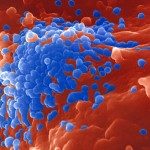Link to Pubmed [PMID] – 19339941
Curr Opin HIV AIDS 2009 Jan;4(1):68-73
PURPOSE OF REVIEW: Cervical cancer, caused by the human papillomavirus (HPV), is the only cancer that is almost preventable through regular screening. In high-resource, as in low-resource and middle-resource countries, women hit by the AIDS epidemic have a high prevalence of infection with HPV and related disease, including cervical cancer. The question whether cervical screening, which helped to reduce dramatically cervical cancer rates through the detection of precancerous lesions in the general population, is as efficient in the setting of HIV is still debated.
RECENT FINDINGS: The risk for cervical cancer remained high and stable during the last decade in HIV-infected women, and incidence did not decrease with improving CD4 cell counts in women receiving antiviral therapy. Optimal methods to improve both the sensitivity and the specificity of cervical cancer screening are currently evaluated. The use of HPV DNA tests in primary screening endorsed in the general population may be less specific in immunocompromised women and might thus not be as efficient on screening. HPV vaccines, recently available, have no therapeutic effect and might thus not be very useful in preventing cervical cancer in a population highly infected with multiple and persistent HPV.
SUMMARY: Cervical cancer prevention remains an important goal in HIV-infected women and specific guidelines are warranted for this increasing population.

